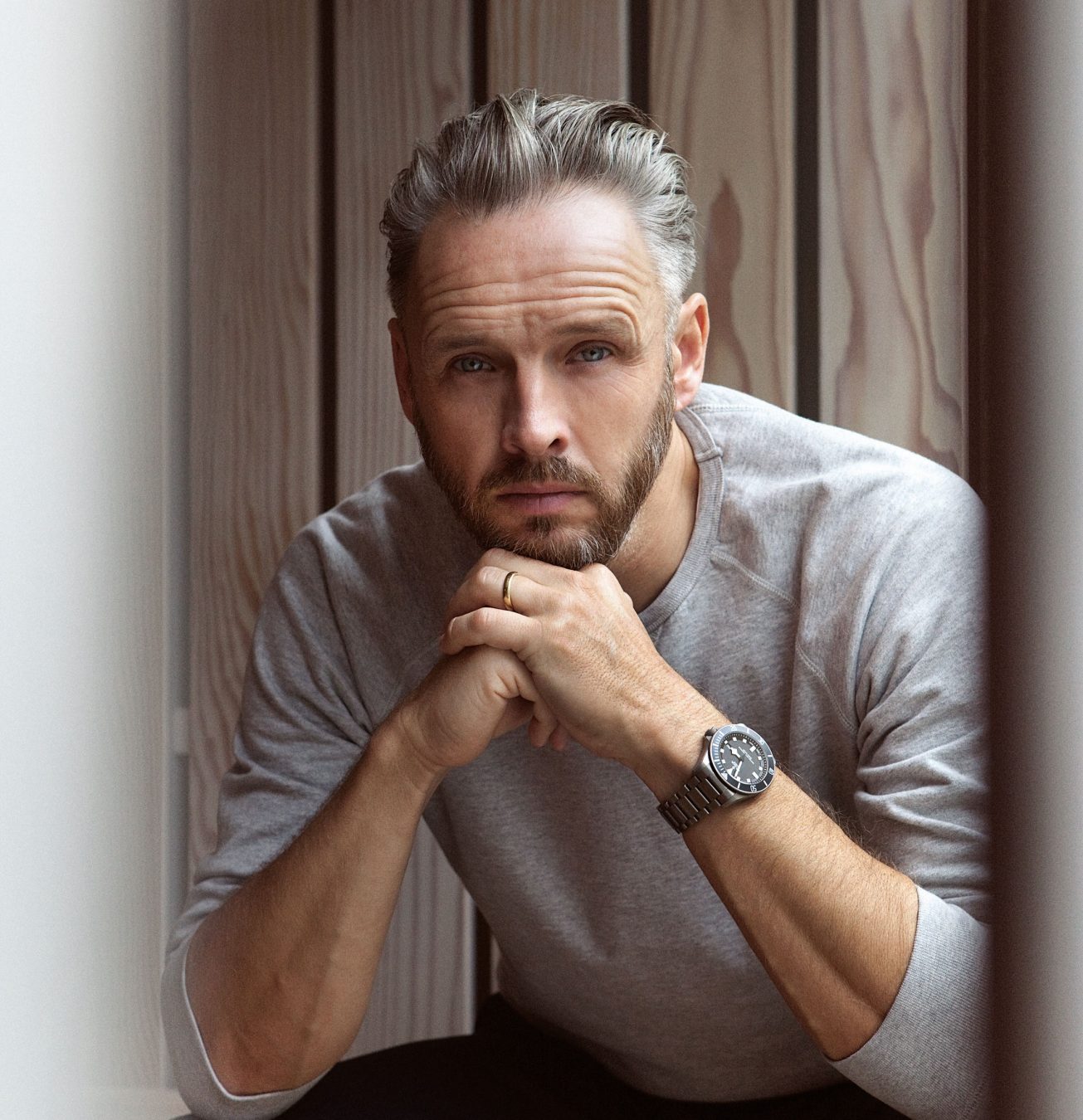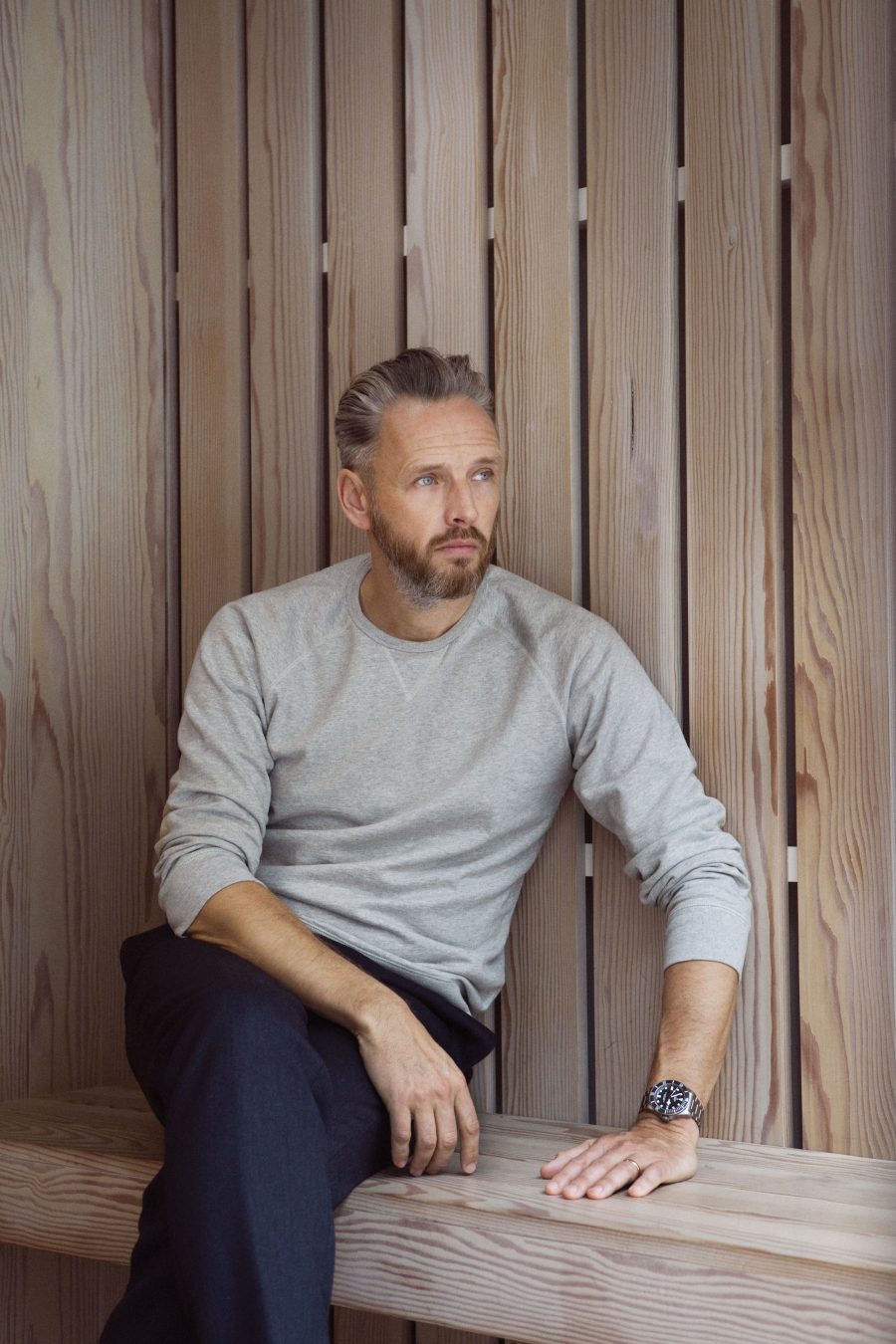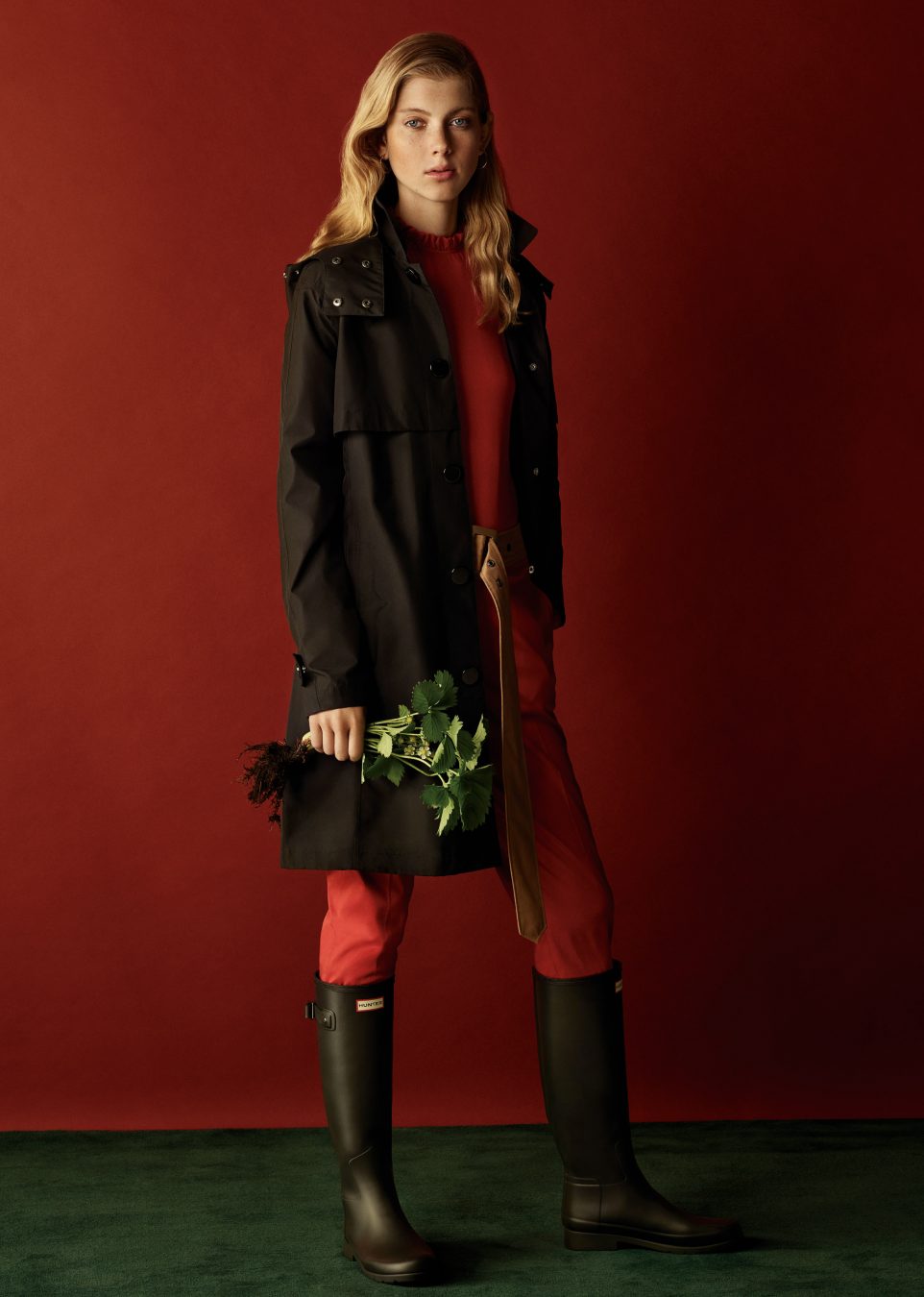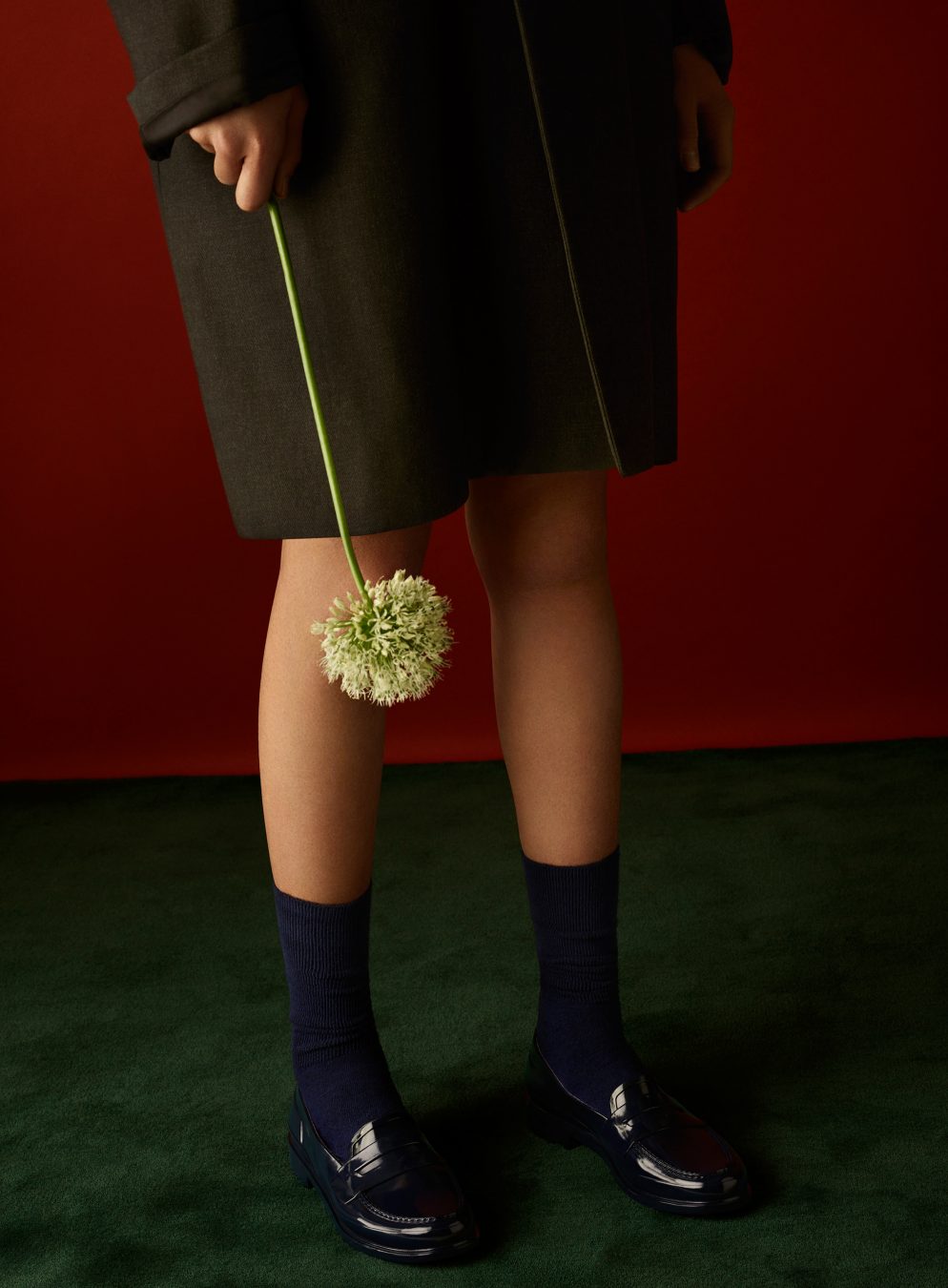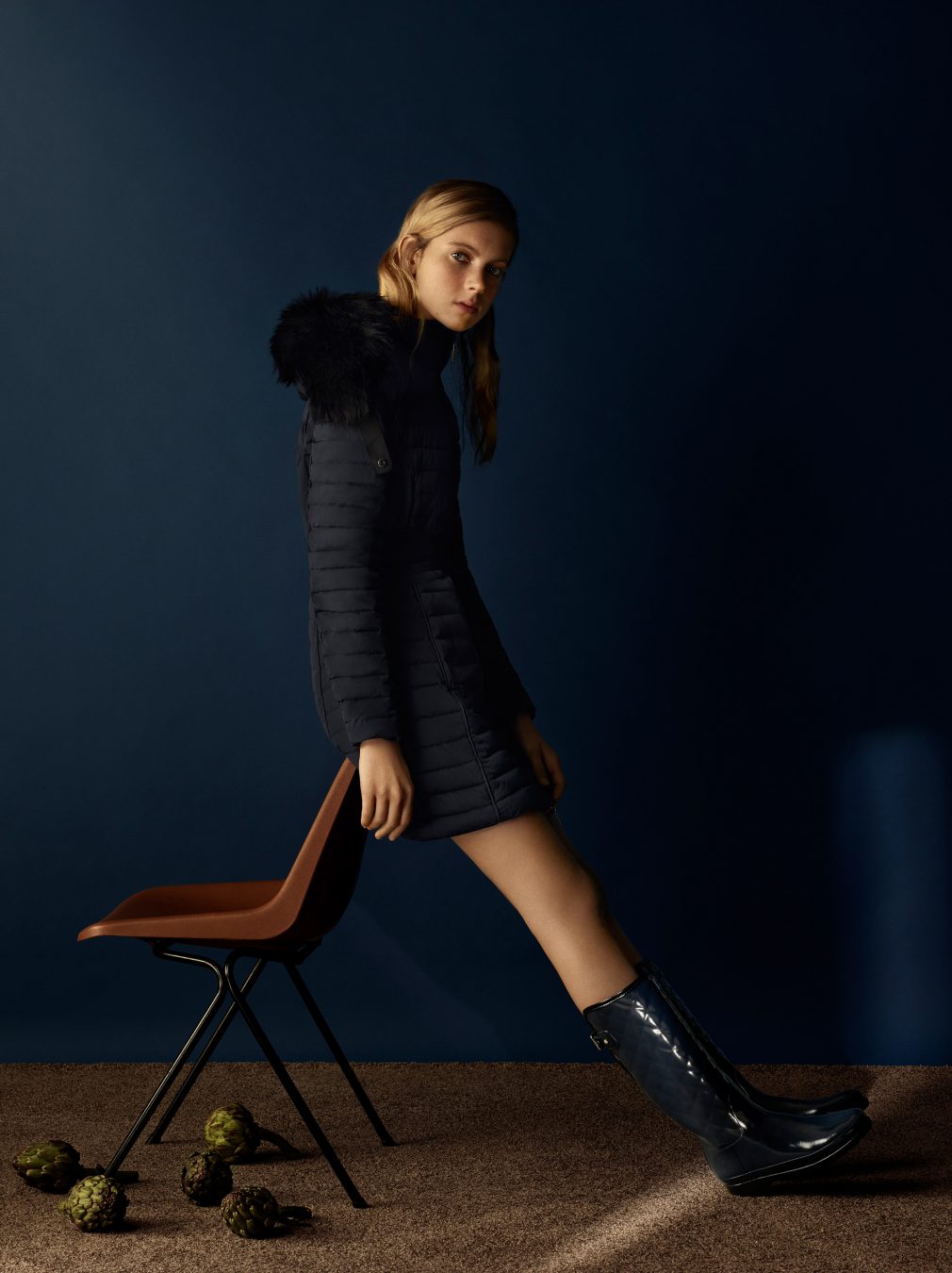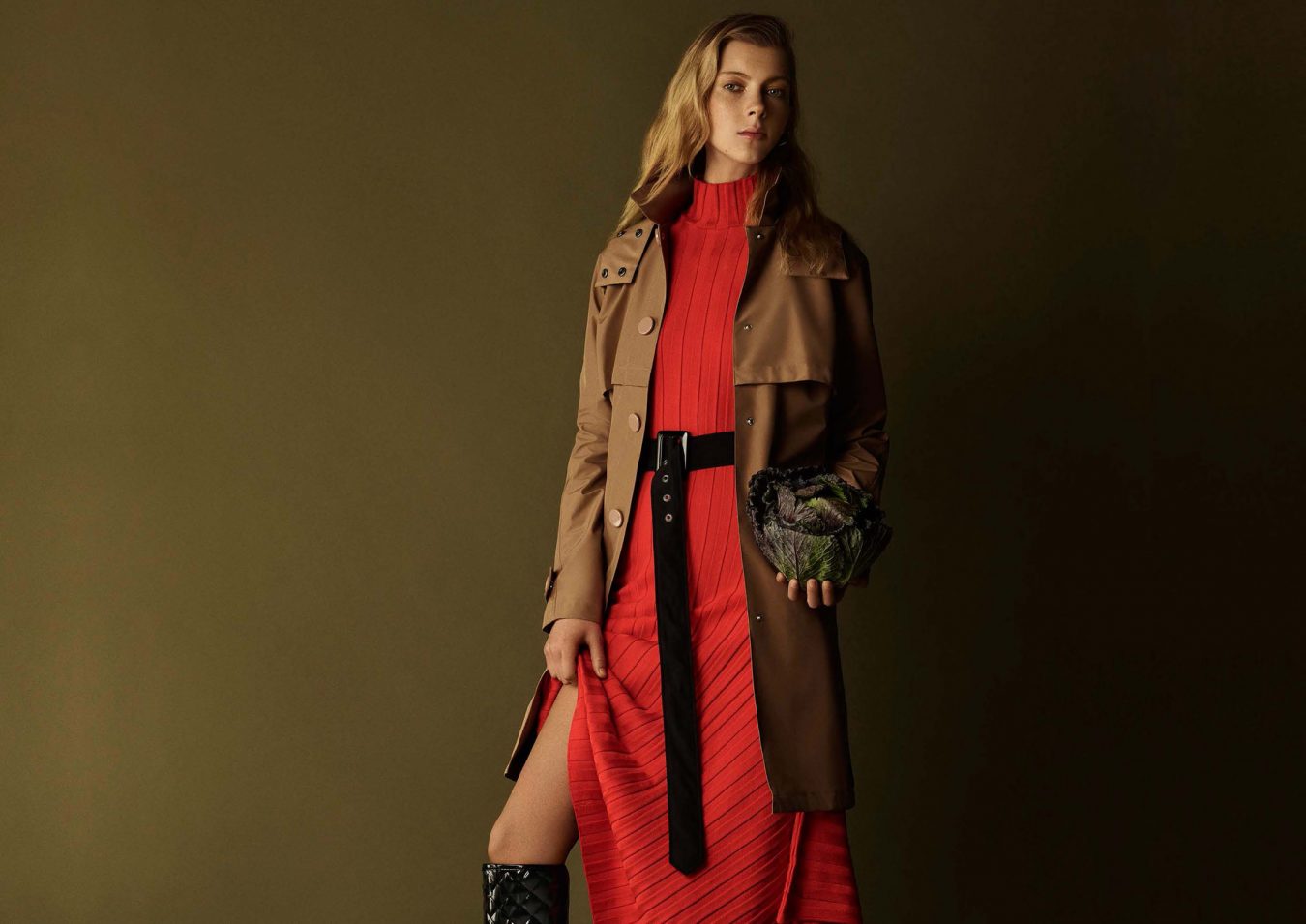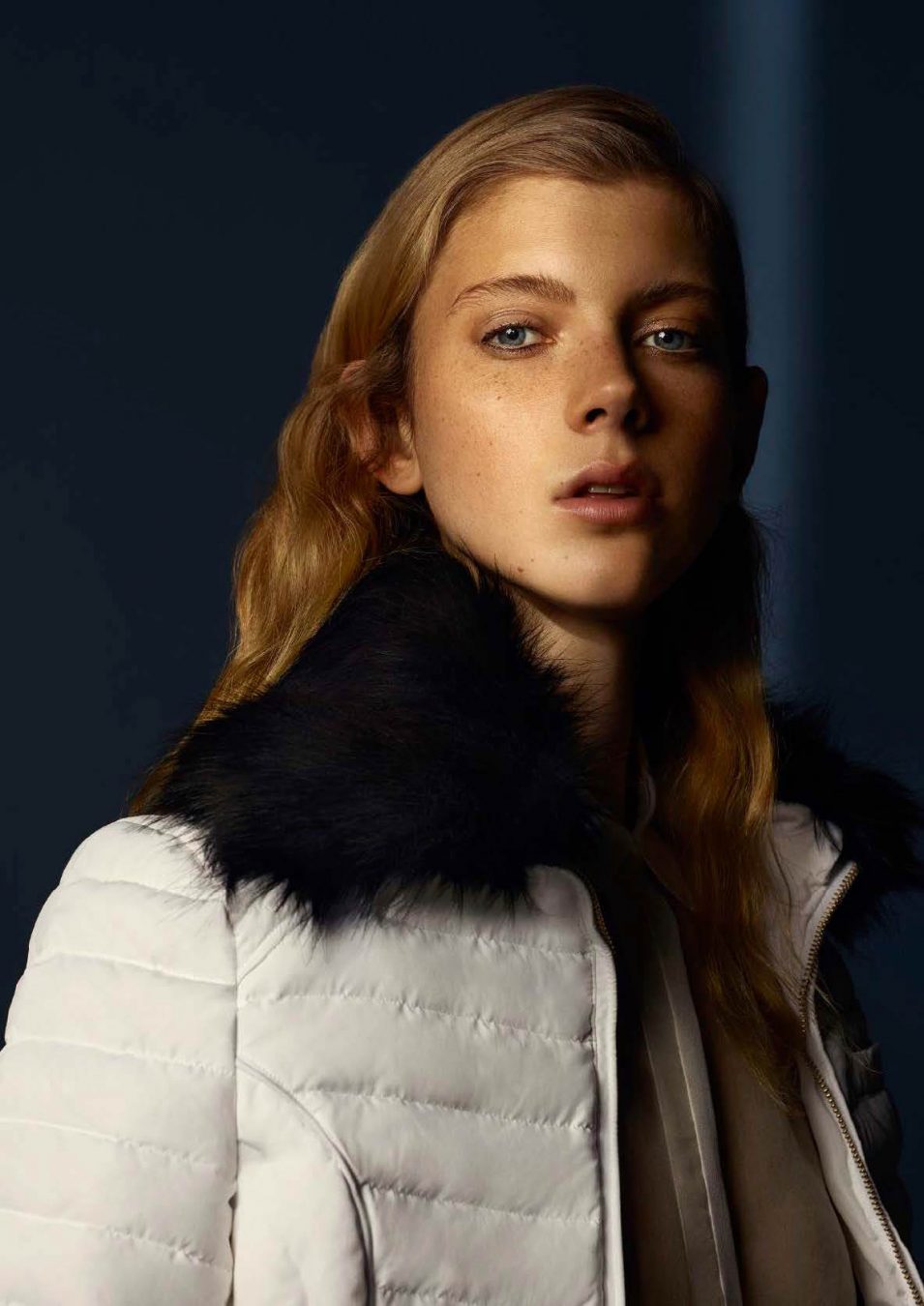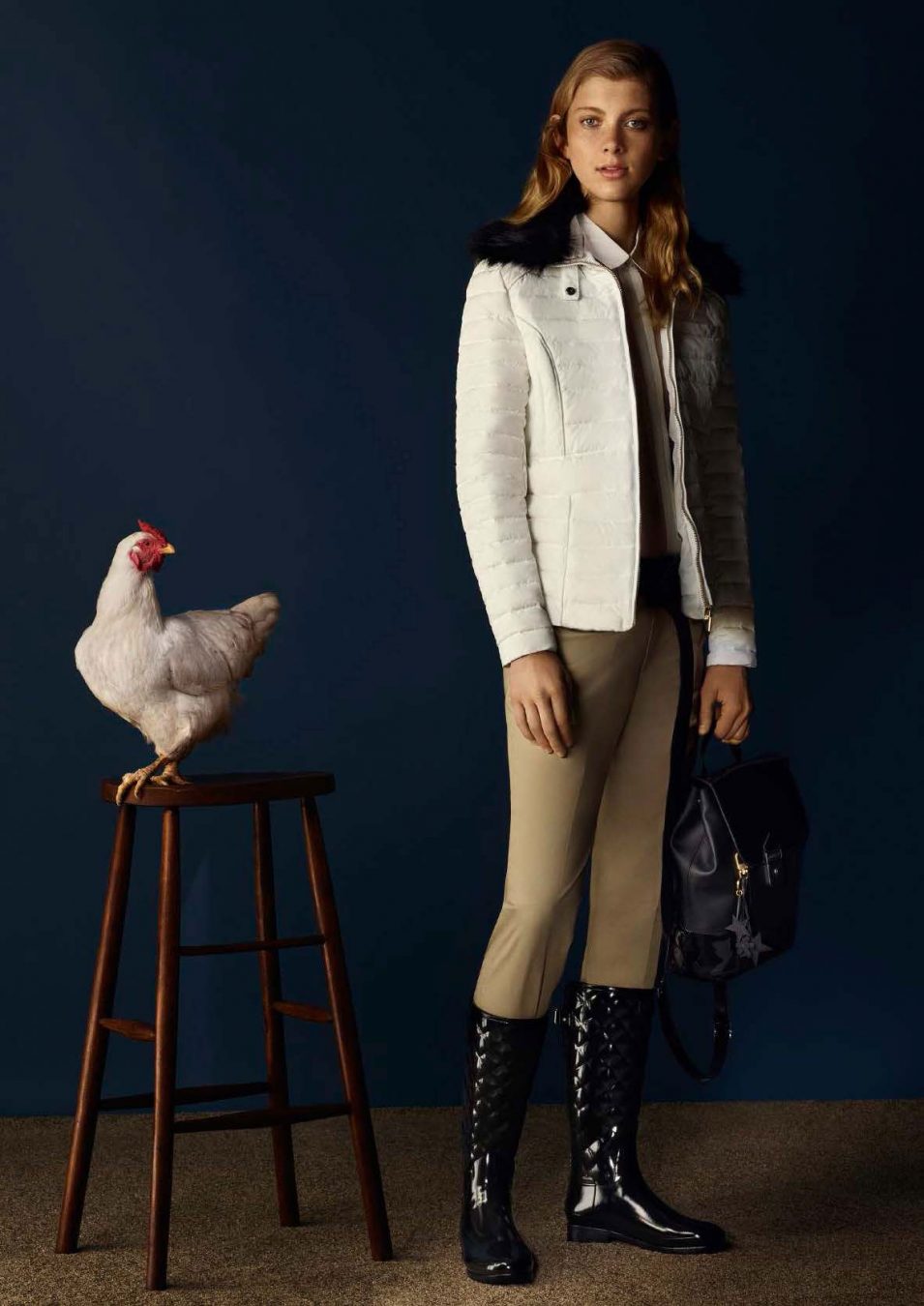The myth of creativity is that it is best forged in dreamy landscapes—remote places where noise and bustle can’t interfere with thought and imagination. The reality, of course, is that most impressive, innovative ideas are usually smelted in the heart of cities.
Hunter, the 160-year-old British heritage brand whose boots have been worn everywhere from the battlefield to the catwalk, is certainly no different. Although its name conjures up images of muddy parks and skies half-smeared in grey and blue, the brand’s dreams, future, and direction are led firmly from its glass-fronted office in London by creative director Alasdhair Willis.
“Sadly I don’t have a cottage in the middle of Wales where I become a creative genius,” he says ruefully. The Hunter offices are a good metaphor for the brand’s positioning, which delicately treads the line between urban and countryside living. On one side is the rolling grassy spaces of London’s Hyde Park, while on the other is the capital’s busiest shopping thoroughfare: Oxford Circus.
Echoing the interior spaces of the brand’s two standalone stores, in London and Tokyo, Willis’s office is airy, flooded with light streaming in through large windows. Described as one of Britain’s most stylish men by Vogue UK, today Willis is dressed casual-smart: a soft, grey sweatshirt; immaculate Adidas trainers; well-tailored trousers. With piercing blue eyes, he cuts a familiar figure as the other half of one of Britain’s power couples; he is married to designer Stella McCartney, and together they have four children.
From the first handshake, it is clear—beyond Willis’s striking good looks that made McCartney instantly fall in love with him across a breakfast table—that he manages an equilibrium between confidence and complete lack of pretense. He may socialize in the uppermost circles of the fashion, music, and sports industries, but he remains steadfastly down-to-earth. It is this refreshing approach that has no doubt given him a foundation for success.
Willis took over as creative director for Hunter in early 2013. In the years he has been here, the changes have been seismic. Although the brand has always been respected for quality and design, at the time, Hunter was known almost exclusively for the Wellington boot. Granted, that one product has an impeccable pedigree; initially adopted by World War One soldiers, it went on to be worn by everyone from Princess Diana to Alexa Chung. Now, however, under Willis’s watchful, masterful eye, Hunter has a design team and an in-house studio. It has well and truly developed into a multi-product brand with a global focus, launching its third store in Toronto’s Yorkdale Shopping Centre in late 2017.
“Sadly I don’t have a cottage in the middle of Wales where I become a creative genius.”
Some may posit that it is an unusual location to open Hunter’s first North American store—why not New York, the usual launchpad for fashion brands? Well, Willis says, Hunter isn’t a fashion brand. Rather, it produces functional products with a nod to fashion sensibilities. “Toronto was always down as one of those key first cities,” he explains. “Now, would I have put maybe New York before that? Possibly, but we are not a label that needs to be able to say we have launched there.”
In the same way that Hunter isn’t exactly a fashion brand yet operates within the fashion spectrum, Willis wasn’t always a fashion person, yet has always operated within design and aesthetics. As an alumnus of The Slade School, he has a strong art pedigree. His choice of masters indicates that straddling two different worlds has always been of appeal: he did painting and French critical theory. But layered on top of that very keen sense for beauty and design is also a sharp commercial acumen. In 1996, he went on to work at the design magazine Wallpaper*, and then founded the brand consultancy Announcement Creative and furniture company Established & Sons. He may now spend most of his time at Hunter, but he still does consultancy work for Adidas because of his immense passion for sport. And, of course, he consults for his wife’s eponymous fashion label.
The constant juggling of projects, he says, is what keeps his creativity knife-sharp. He manages his hectic schedule by being an early riser—“Also, when you have four children, you have no choice”—and he has a unique working method that embraces the chaos rather than shuts it out. “Do I like being on my own?” he muses. “Yes, I do, I love it. I do some of my best thinking and work when I am isolated. But I also come back and work in a studio to be around people, and that really helps the process.”
Hunter was founded in Scotland in 1856, the sole of its first boots inspired by a vulcanized rubber process that was originally used in the automotive industry. The product ticked along perfectly well for decades until it was seen on supermodel Kate Moss at Glastonbury. She was something of a catalyst for the brand’s popularity in the younger, non-countryside market—all of a sudden, Hunter boots were de rigeur at the iconic English music festival, inadvertently setting the brand down an uncharted and rudderless path. So much so that when Willis joined, while it looked good on paper, in terms of brand identity, things were messy. Trying to capitalize on the popularity explosion, Hunter had a distribution problem: it tried to sell the boot to anyone and everyone, and it got to the point where it was being sold on certain sites for heavily discounted prices, which was diluting the brand. Moreover, it was now in a dangerous position of alienating its target customers.
“You would get a guy going into a country store and seeing bright pink Hunter boots thinking, ‘Right, this brand is no longer for me,’” Willis says. “That is a disaster.” But if there was someone who understood the power of coherency in a brand, it was Willis. He cleaned up distribution, and restructured the lines so that Hunter Field catered to a customer looking for a technical, performance-based product, while Hunter Original was aimed at a younger, more fashion-facing crowd. Adding to this are limited-edition collaborations, such as the line of backpacks designed by makeup designer Isamaya Ffrench. Ever the pragmatist, Willis says that while the pieces produced by Ffrench may not have dramatically moved their profit margin, what they have done is shift the mindset around Hunter, leading to conversations with Dover Street Market about stocking the brand.
Underpinning all of this is Willis’s firm belief in digital innovation. Hunter recently partnered with Pinterest, and also completed a first-ever collaboration with Snapchat across United States college campuses that garnered 10 million impressions. When asked about future plans, Willis says Hunter is launching a new outdoor campaign that kicks into life when a certain amount of precipitation occurs.
“I’m not hammering it home, I’m just doing it,” he says thoughtfully. “It’s for the customer; if the customer sees it and responds to it, that’s enough for me.” It’s clear that Willis is a man with his feet firmly on the ground, and whether that’s in a muddy field at Glastonbury or trudging along the rainy streets of Soho in London, you get the sense he is just at home in both.
Read more in fashion labels from around the world here.

